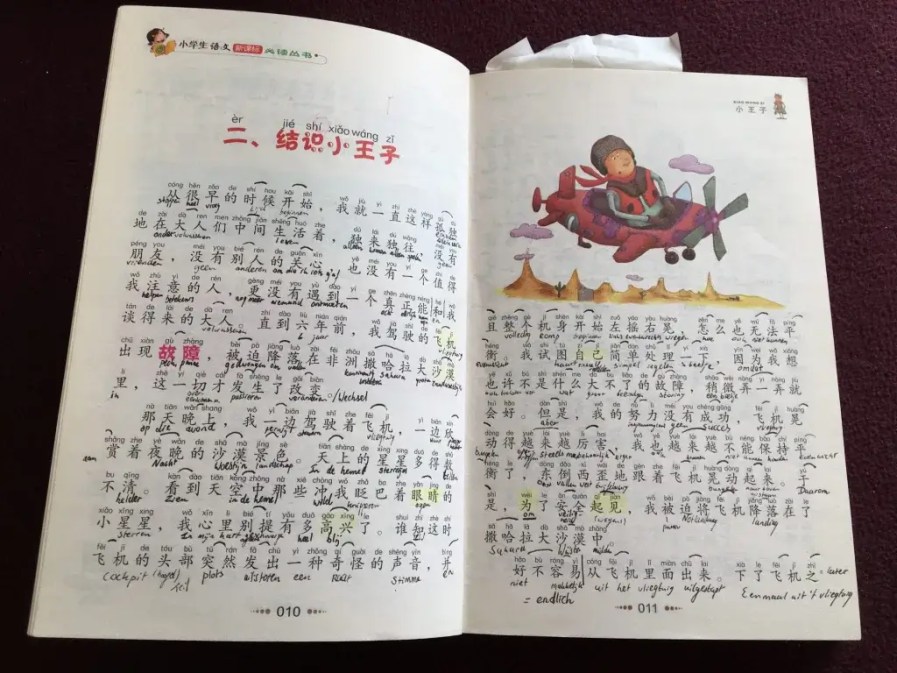Would you do things differently today, if you’d have to start learning Mandarin all over again? I would! Based on my own experience and what I know from others, here are seven don’ts for learning Chinese.
01. Start without a teacher or tutor
Chinese is a hard language to ‘unlock’ on your own, especially when you’ve just started out. It is all too easy – in your enthusiasm – to lose a lot of time, lacking effective learning methods and not knowing where exactly to start and what pitfalls to look out for. So when you’re serious about learning Chinese, you probably won’t regret finding a Chinese teacher or tutor for regular lessons early on. By doing so you avoid wasting time – like I did – on self-studying the romanization system for Chinese called Pinyin and Chinese characters without a clear goal and structure.
02. Skip the basics of Pinyin, tones and pronunciation
Pinyin, tones and pronunciation build the first layer of your Chinese language foundation. This foundation needs to be as strong as possible in order not to subside once you progress. It’s very tempting to rush on to more interesting content like Chinese characters and new vocabulary, thinking there’s enough time to work on tones and all that other beginner’s stuff later on. The truth is nobody ever regretted covering these basics thoroughly. This usually includes:
- Writing basic Chinese sentences in Pinyin, also from dictation
- Speaking and recognizing the four tones, practicing both individual tones and tone pairs
- Reading Pinyin fluently and correctly (standard pronunciation)
Although more and more resources are available for mastering Pinyin, probably the best way to build a solid foundation is to join something like a “Pinyin boot camp” or intensive Pinyin elementary course. When I started studying Mandarin, I had no choice but to undergo a two-week Pinyin brainwash with our devoted Chinese teacher. We would go through all the Pinyin syllables and enjoyed prolonged drill sessions with our inexhaustible laoshi to the point where we would be haunted by shreds of chu, qu, chang, qiang, nü and nu outside the classroom. However, this Pinyin boot camp proofed a big help for everything that followed. In most cases, I’d say an intensive Pinyin introduction is more effective than self-studying Pinyin without qualified native speakers helping you.
03. Ignore Hanzi
Can you learn Chinese without Chinese characters? This is an intensely debated question. It all depends on your personal goals: what degree of proficiency do you want to reach? Which language skills matter to you? But even so, Chinese characters are an integral part of the Chinese language. Not studying them is like learning how to fly an airplane without covering aerodynamics. You might succeed, yet you’re missing out on so much.
So yes, it’s possible to learn basic level Chinese without understanding Hanzi, BUT… Pinyin – in the long run – cannot replace Hanzi. The thing is that the Chinese writing system is so essential to Chinese culture that without it, you’ll remain “illiterate”, not just in the direct sense but also in terms of understanding the Chinese language and culture (and people). Without the characters, your learning curve will flatten in an earlier stage, because the fact that more and more vocabulary sounds and looks the same to you becomes a real handicap.
Here is an example:

To illustrate this in more detail: When you ignore the four tones, standard Chinese has about 400 different syllables. Not a very high number compared to German, English, Russian or most other languages. The result of this small phonetic inventory is a high level of similar sounding words or homophony. But this relatively small amount of syllables does match a far greater number of commonly used characters. The official list numbers about 7000 common Hanzi. You get pretty far though, when you know the thousand most frequently used characters.

So this is something to consider when you are starting out or have that feeling that Pinyin brought you a long way, but now making progress becomes harder and harder. That’s why each Pinyin-only learning method is OK and even better for the first steps, but probably won’t get you to an intermediate or advanced level.
04. Forget to make Chinese friends
Learning Chinese becomes much more real and fun when you can communicate with Chinese people. If you happen not to be somewhere within Greater China, local tandem programs and language exchange facebook groups (or Scrabbin or interpals) can be an excellent starting point. It doesn’t always work out the first time, but once you get lucky, this can change everything.
05. Worry if you “still don’t understand anything”
Chinese is unlike Italian or French so different from almost all languages that hardly any word sounds familiar. Especially when you are not in a Chinese speaking region and immersed in the language, developing adequate listening skills takes time and is really difficult, so don’t be too hard on yourself. It’s quite normal. The technical term for this is ‘tolerance of ambiguity’, meaning you should accept that you can’t understand everything all the time. Concentrate on what you know and build on that. When you have got time, watch Chinese movies and listen Chinese songs and keep a steady level of Chinese input.
06. Expect apps to solve all your problems
Apps are reshaping the way we learn foreign languages, but the learner still has to make time and deliver the effort to climb up the hill. What’s just as important: how to use online learning applications the right way. App developers don’t know your goals and motivation or indeed what’s best for you. That’s why apps usually don’t provide much guidance and for instance don’t tell you how, when, how often and with which expectations to use them.
That being said, do look out for apps that have a positive impact on your learning. My personal favorites: Pleco Chinese dictionary, Skritter for writing characters, DuShu for reading, Daily Chinese for flashcards and Readibu for Chinese novels.
07. Think children’s books are easy
When I knew a couple of hundred characters, I reckoned it was time to read “红红的柿子树” (“honghong de shizishu”/ “red persimmon tree”), a children’s book a Chinese friend gave to me.
It had Pinyin and pictures and I could recognize several characters, but I had a hard time making sense of the story. For two reasons: 1.) It was too hard for me. 2.) I couldn’t really relate to “little piggy looking for a friend” and all the other exciting animal characters in the book. This was demotivating to me.
Reading “The Little Prince” in Chinese (with Pinyin) was even worse. It’s a great book: nice pictures, short chapters, Pinyin included and you can listen to the Chinese audio-version. However it proofed almost impossible to understand for me without translating word by word, which I tried for some time, but it’s not something I would recommend. Try Chinese graded readers instead. These are books fine-tuned for certain language levels with a reduced amount of vocabulary that you can read without much effort.

Thanks for reading! If you have any thoughts or ideas about this topic, please leave a comment below.
Affiliate links
Disclosure: These are affiliate links. They help me to support this blog, meaning, at no additional cost to you, I will earn a small commission if you click through and make a purchase.


















6 thoughts on “The 7 biggest DON’TS learning Chinese”